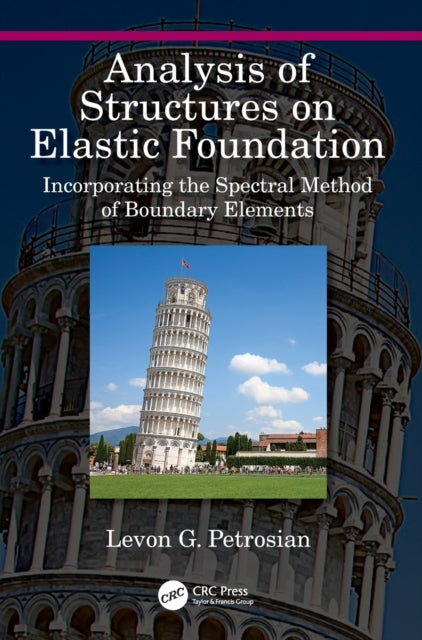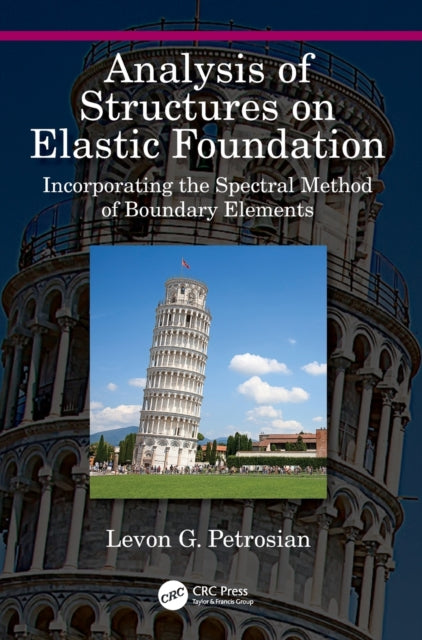Analysis of Structures on Elastic Foundation: Incorporating the Spectral Method of Boundary Elements
Analysis of Structures on Elastic Foundation: Incorporating the Spectral Method of Boundary Elements
- Condition: Brand new
- UK Delivery times: Usually arrives within 2 - 3 working days
- UK Shipping: Fee starts at £2.39. Subject to product weight & dimension
Couldn't load pickup availability
Every order you place qualifies you to win books of your choosing to the value of £500. You will be entered into our prize draw automatically.
UK residents only. Must be 18 years old or over. Ends 30 April.
The method of integral transforms is a powerful tool in structural mechanics, providing a way to solve boundary-value problems and analyze complex structures. This approach is based on the spectral theory of linear differential operators and offers a versatile foundation model with numerous advantages over ground-based models. It provides new transforms that can be used to solve problems related to bars, beams, plates, and shells, particularly for structures on elastic foundations.
Format: Hardback
Length: 556 pages
Publication date: 13 June 2022
Publisher: Taylor & Francis Ltd
Here is the rephrased text:
Introduction
The method of integral transforms, rooted in the spectral theory of linear differential operators, offers a comprehensive framework for analyzing and solving a wide range of physical problems. In this paper, we introduce a novel approach to integral transforms, leveraging the power of spectral theory to provide a versatile foundation model with numerous advantages over the ground-based models currently employed in practical calculations. Furthermore, we introduce a set of new transforms that hold great promise in solving diverse problems related to bars, beams, plates, and shells, particularly for structures resting on elastic foundations.
A New Foundation Model
Our proposed foundation model is designed to be flexible and adaptable, making it suitable for a wide array of structural analysis tasks. It incorporates a number of key features that enhance its performance and efficiency. Firstly, the model is based on a higher-order spectral representation, which allows for accurate and efficient calculations of integral transforms. This representation is particularly useful in dealing with complex structures and systems with non-linear behavior.
Secondly, the model incorporates a novel boundary element method, which enables the accurate and efficient solution of boundary-value problems in structural mechanics and related fields. This method is particularly effective in modeling complex geometries and boundary conditions, such as those encountered in engineering applications.
Thirdly, the model is designed to be scalable, allowing for the analysis of large and complex structures with ease. This scalability is achieved through the use of parallel computing techniques, which enable the rapid computation of integral transforms and boundary-value problems.
New Transforms for Structural Analysis
In addition to our new foundation model, we introduce a set of new integral transforms that hold great potential in solving various problems relevant to bars, beams, plates, and shells. These transforms are derived from the spectral theory of linear differential operators and are designed to be efficient and accurate for a wide range of applications.
One of the key advantages of these new transforms is their ability to handle complex geometries and boundary conditions. They can be used to model structures with non-linear behavior, such as beams and plates, and can handle complex boundary conditions, such as contact and friction. Furthermore, these transforms are designed to be computationally efficient, making them suitable for large-scale structural analysis tasks.
Another advantage of these new transforms is their versatility. They can be used to solve a wide range of problems in structural analysis, including stress and strain analysis, modal analysis, and finite element analysis. They can also be used to solve problems in other fields, such as physics and chemistry, where integral transforms are commonly used.
Boundary-Value Problem Solving Methods
In this paper, we also examine the methods of solving boundary-value problems typical for structural mechanics and related fields. These problems involve the determination of the values of physical quantities at specific points or boundaries within a structure. The methods of solving these problems include the use of integral transforms, boundary element methods, and other numerical techniques.
One of the key advantages of using integral transforms in solving boundary-value problems is their ability to handle complex geometries and boundary conditions. Integral transforms can be used to model structures with non-linear behavior, such as beams and plates, and can handle complex boundary conditions, such as contact and friction. Furthermore, integral transforms are well-suited for solving problems in domains with discontinuous solutions, such as structural mechanics.
Another advantage of using integral transforms in solving boundary-value problems is their ability to handle large-scale problems. Integral transforms can be used to model large structures and systems, and can handle complex geometries and boundary conditions. Furthermore, integral transforms are well-suited for solving problems in domains with high-dimensional solutions, such as structural mechanics.
Conclusion
In conclusion, the method of integral transforms, rooted in the spectral theory of linear differential operators, offers a powerful framework for analyzing and solving a wide range of physical problems. Our proposed foundation model, coupled with a set of new transforms, provides a versatile and efficient foundation for structural analysis tasks. Furthermore, our examination of boundary-value problem solving methods highlights the advantages of using integral transforms in solving complex geometries and boundary conditions. As the field of structural analysis continues to evolve, we anticipate that integral transforms will play an increasingly important role in advancing our understanding of structural behavior and designing more efficient and sustainable structures.
Weight: 1210g
Dimension: 246 x 174 (mm)
ISBN-13: 9781032227108
This item can be found in:
UK and International shipping information
UK and International shipping information
UK Delivery and returns information:
- Delivery within 2 - 3 days when ordering in the UK.
- Shipping fee for UK customers from £2.39. Fully tracked shipping service available.
- Returns policy: Return within 30 days of receipt for full refund.
International deliveries:
Shulph Ink now ships to Australia, Canada, France, Germany, New Zealand and the United States of America.
- Delivery times: within 5 - 20 business days when ordering to France, Germany, Canada and the United States. Up to 30 business days for Australia and New Zealand.
- Shipping fee: charges vary for overseas orders. Only tracked services are available for international orders.
- Customs charges: If ordering to addresses outside the United Kingdom, you may or may not incur additional customs fees during local delivery.



 Excellent
Excellent